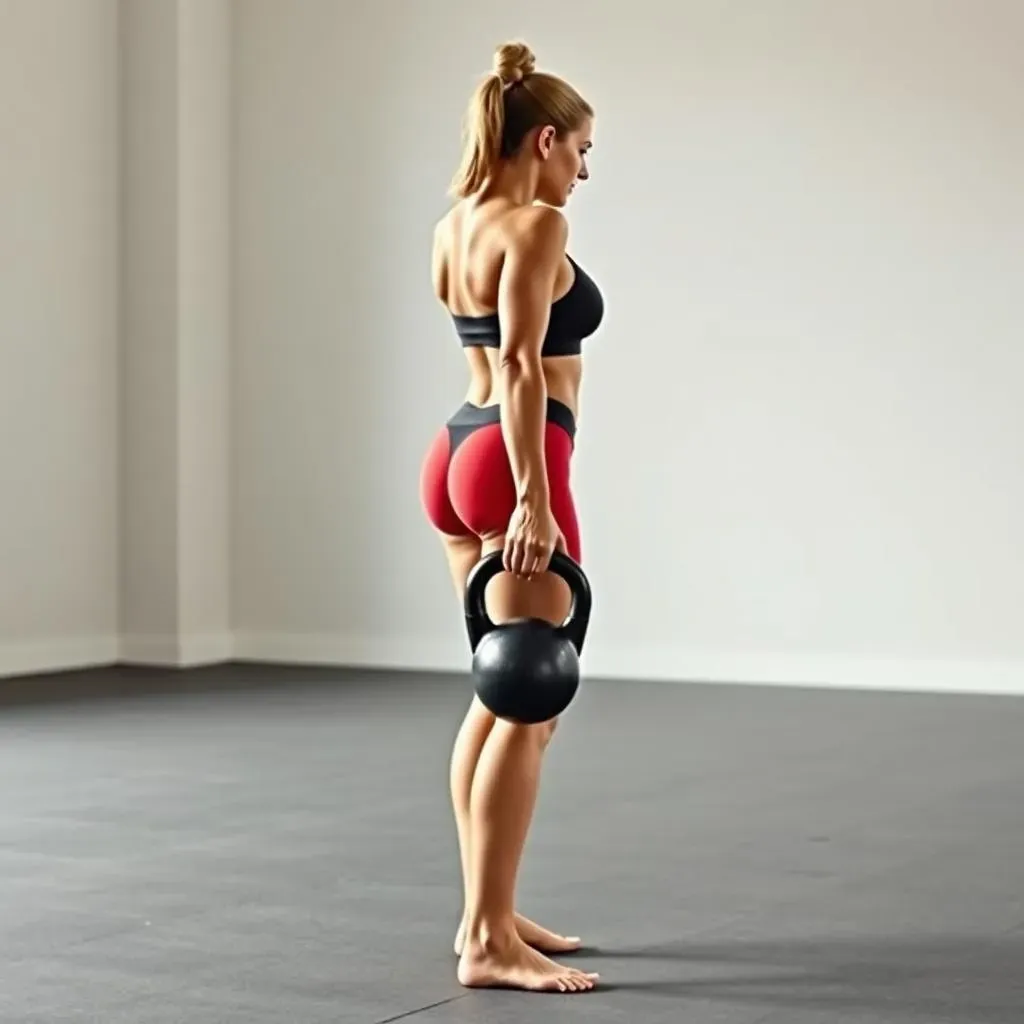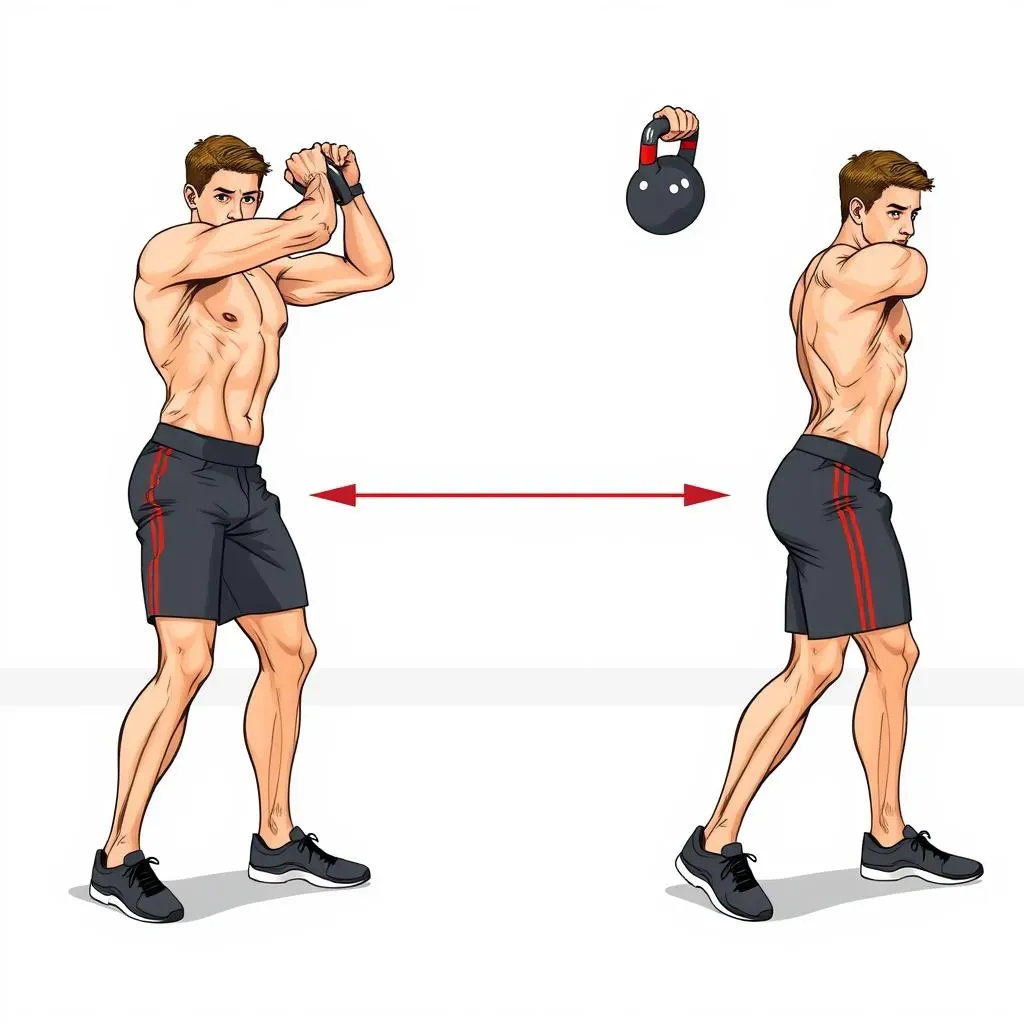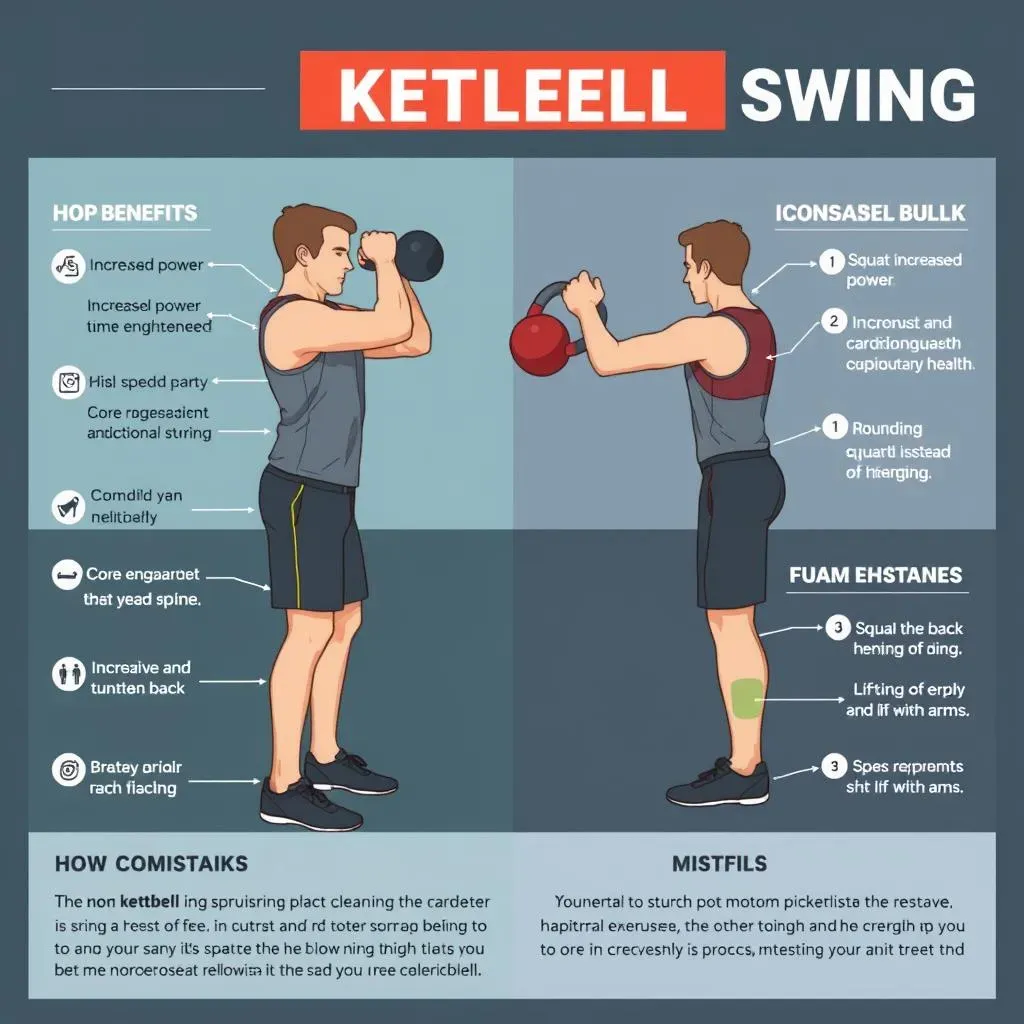Table of Contents
Ever feel like you're just going through the motions in your workouts? Want something that builds strength and gets your heart pumping? Then, let's talk about the 2 arm kettlebell swing. This isn't just some fancy gym move; it's a powerful exercise that works your whole body. We're not just swinging a weight; we’re building a foundation of strength and power. This guide will walk you through everything you need to know, from how to set up your stance to the little things that make a big difference in your swing. We’ll break down the proper movements, so you’re not just throwing a kettlebell around. I'll also cover the advantages of this exercise and, just as importantly, point out the common mistakes to avoid. So, whether you’re a seasoned lifter or just starting out, this is your roadmap to mastering the 2 arm kettlebell swing and unlocking a new level of fitness.
Setting Up Your 2 Arm Kettlebell Swing

Setting Up Your 2 Arm Kettlebell Swing
Stance: The Foundation of Your Swing
Alright, let’s get down to brass tacks. The 2 arm kettlebell swing isn't about just picking up a weight and flailing around. It all starts with your stance. Think of it like building a house; you wouldn't start with the roof, right? Your feet should be a little wider than shoulder-width apart. Imagine you're about to do a jump squat—that's the kind of width we’re aiming for. Now, point your toes slightly outward; this isn't a ballet class, but it helps with stability. You want to feel grounded, like you could take on a charging rhino, not like you're about to tip over. This solid base will let you generate power without wobbling around like a newborn giraffe.
Grip: Holding On Tight
Next up, the grip. Now, don't get all fancy with it; a simple, solid grip is what we need. Bend at your hips and knees, reaching down to grab the kettlebell handle with both hands. You want an overhand grip, like you're shaking hands with the bell—no need to get too friendly though. Make sure your grip is firm, but not death-grip tight. You should be able to hold on without your knuckles turning white. Think of it like holding a hammer—you need a good grip, but you don't need to squeeze so hard that you can't swing it. The key here is to keep your arms straight and your shoulders engaged. This isn't a bicep curl, folks, it’s a full-body movement.
Key Point | Description |
|---|---|
Feet Placement | Slightly wider than shoulder-width, toes pointed slightly out. |
Grip | Overhand grip, firm but not too tight. |
Arm Position | Straight arms, shoulders engaged. |
The Starting Position: Ready to Launch
Okay, so you've got your stance and your grip; now, let's talk starting position. Before you even think about swinging, make sure your back is flat, not rounded like a scared cat. Hinge at your hips, pushing your butt back like you're about to sit in a chair—a very low chair. The kettlebell should be hanging down between your legs, almost touching the ground. Your eyes should be looking straight ahead, not down at the floor; this helps keep your spine in line. Think of this position as a loaded spring, ready to unleash some serious power. It’s not just about bending over; it’s about creating tension and getting ready to explode.
The 2 Arm Kettlebell Swing: Movement and Technique

The 2 Arm Kettlebell Swing: Movement and Technique
The Backswing: Gathering Momentum
Alright, now that you're all set up, let's get this show on the road. The backswing isn't just about letting the kettlebell drop; it's about gathering momentum for the swing. As the kettlebell falls between your legs, let it swing back naturally. Don't try to muscle it down, just allow gravity to do its thing. You should feel a stretch in your hamstrings, like you’re about to unleash a powerful jump. Keep that back flat, and your core engaged. This isn't a deep squat; it's a hinge at your hips. Think of it like a pendulum swinging back and forth, storing energy for the main event.
The Upward Swing: Unleashing the Power
Now for the fun part: the upward swing. Once the kettlebell swings back, it's time to explode forward. Drive your hips forward, squeezing your glutes like you’re trying to crack a walnut between them. The power comes from your hips, not your arms. Your arms are just along for the ride, guiding the kettlebell upward. As you swing, the kettlebell should rise to about chest level, maybe a bit higher, depending on your flexibility. Keep your core tight, and don't let your back round out. This is where you’ll really feel the burn, and that’s a good thing. It means you're doing it right. Remember, it's not about lifting the kettlebell with your arms; it’s about using your hips to swing it.
It's like a cannon firing a ball: the power comes from the base, not the barrel.
Phase | Action | Focus |
|---|---|---|
Backswing | Allow kettlebell to swing back naturally | Hinge at hips, engaged core |
Upward Swing | Drive hips forward, squeeze glutes | Power from hips, arms guide |
The Top of the Swing and Controlled Descent
At the top of the swing, your body should be straight. Your core is tight, and your glutes are squeezed. The kettlebell should be floating at around chest height. This isn't a pause; it's a brief moment before you start the next swing. Let the kettlebell fall back down between your legs, guiding it with your arms. It's crucial to control the descent, not just let the kettlebell crash down. This helps maintain the flow of the exercise and avoid any sudden jolts to your back. As the kettlebell falls, hinge at the hips again, preparing for the next rep. Think of it like a continuous loop, a smooth and powerful motion, not a series of jerky movements. It’s all about rhythm and control.
Benefits of the TwoArm Kettlebell Swing and Common Mistakes

Benefits of the TwoArm Kettlebell Swing and Common Mistakes
The Awesome Benefits of the Two-Arm Kettlebell Swing
Alright, let's get into why you should even bother with this exercise. The two-arm kettlebell swing is like a Swiss Army knife for your fitness routine. First off, it’s a full-body workout. We're talking about working your glutes, hamstrings, core, back, and shoulders all at once. It’s not just about building muscle; it’s about building functional strength that translates to everyday life. You'll be able to carry groceries, chase after your kids, and maybe even move that stubborn couch without throwing out your back. It also torches calories, making it a great option if you're trying to lose weight. It's like hitting the gym and getting a cardio workout at the same time. So you’re getting a lot of bang for your buck with this one move. Think of it as a time-saver too—who doesn’t love that?
And it doesn't stop there. The kettlebell swing improves your power and explosiveness. It's not just about lifting heavy things; it’s about moving with force and speed. This will make you stronger in other areas of your life, from sports to just being able to hop out of bed with more energy. It's also amazing for your cardiovascular health. You'll be huffing and puffing, but in a good way. It’s like a secret weapon for improving your overall fitness, all packed into one simple swing.
Common Mistakes: What Not to Do
Now, let’s talk about the things to avoid, because let's be real, it's easy to mess this up. One of the most common mistakes is squatting instead of hinging at the hips. Remember, it’s not a squat; it’s a hip hinge. If you’re bending your knees too much, you’re not getting the full benefit of the swing and you're putting unnecessary strain on your knees. Another big no-no is using your arms to lift the kettlebell. Your arms are just guides; the power should come from your hips. If you're feeling it in your shoulders and biceps, you're doing it wrong. It’s like trying to paddle a boat with your hands instead of using the oars.
Also, watch out for rounding your back. This isn't just bad form; it’s a recipe for injury. Keep your back flat and your core tight throughout the entire movement. It’s like building a bridge; you need a solid foundation, not a wobbly mess. And finally, don't go too heavy too soon. Start with a lighter weight and focus on getting the form right. Once you’ve mastered the movement, then you can start increasing the weight. It’s a marathon, not a sprint. Think of it like learning to play an instrument; you start with the basics before you try to play a concerto.
Benefit | Description |
|---|---|
Full Body Workout | Engages glutes, hamstrings, core, back, and shoulders. |
Functional Strength | Improves strength for everyday activities. |
Power and Explosiveness | Increases power and speed in movements. |
Cardiovascular Health | Improves heart health and burns calories. |
Common Mistake | Description |
|---|---|
Squatting Instead of Hinging | Bending knees too much, not hinging at the hips. |
Lifting with Arms | Using arms to lift instead of hips. |
Rounding Back | Not keeping back flat and core tight. |
Going Too Heavy Too Soon | Starting with too much weight before mastering form. |